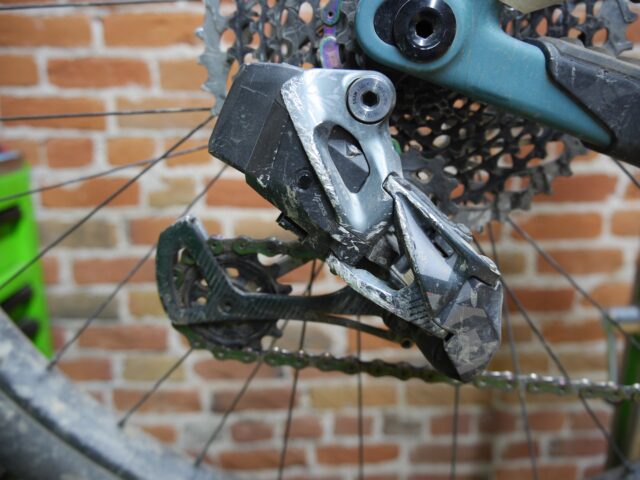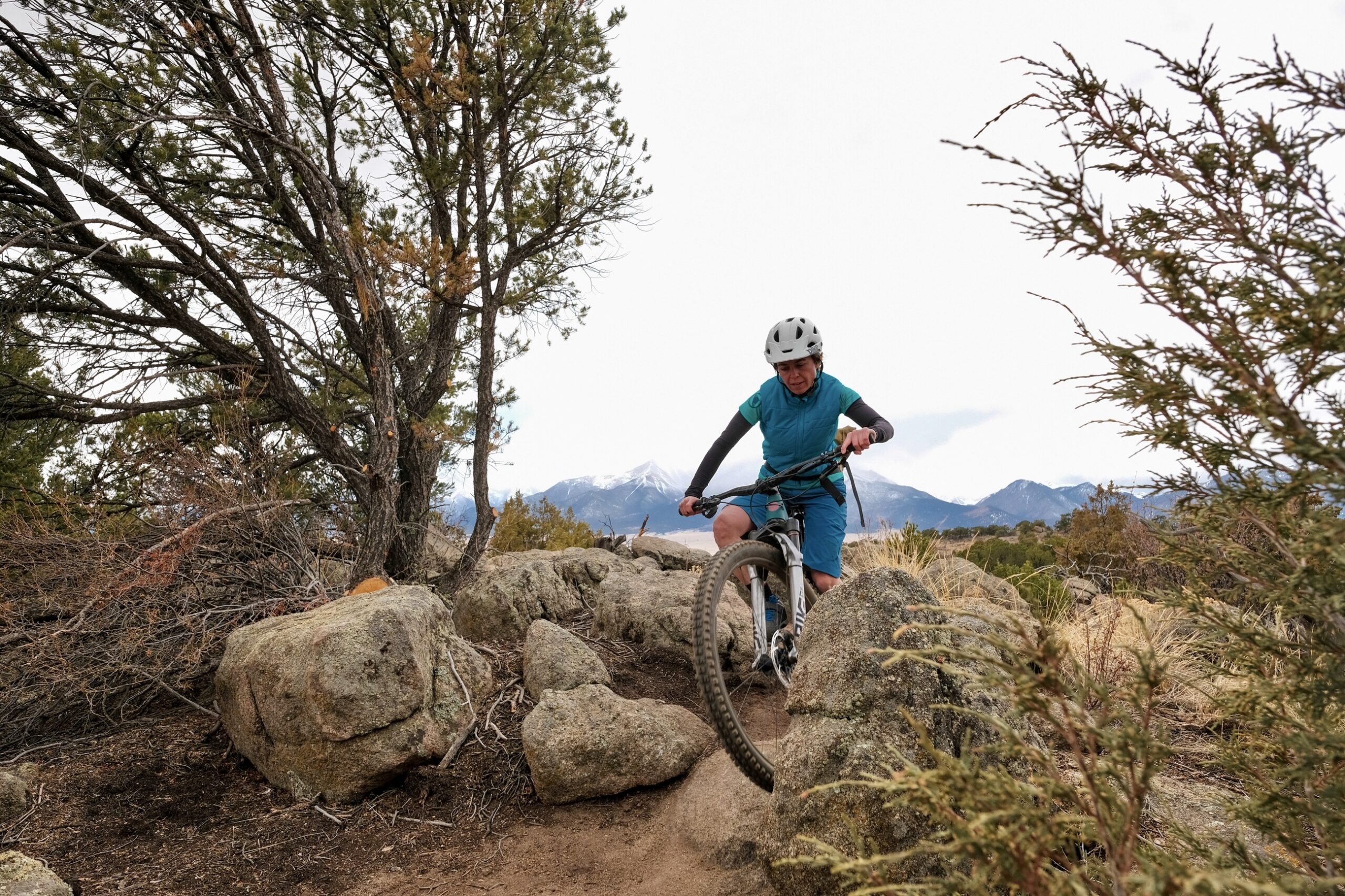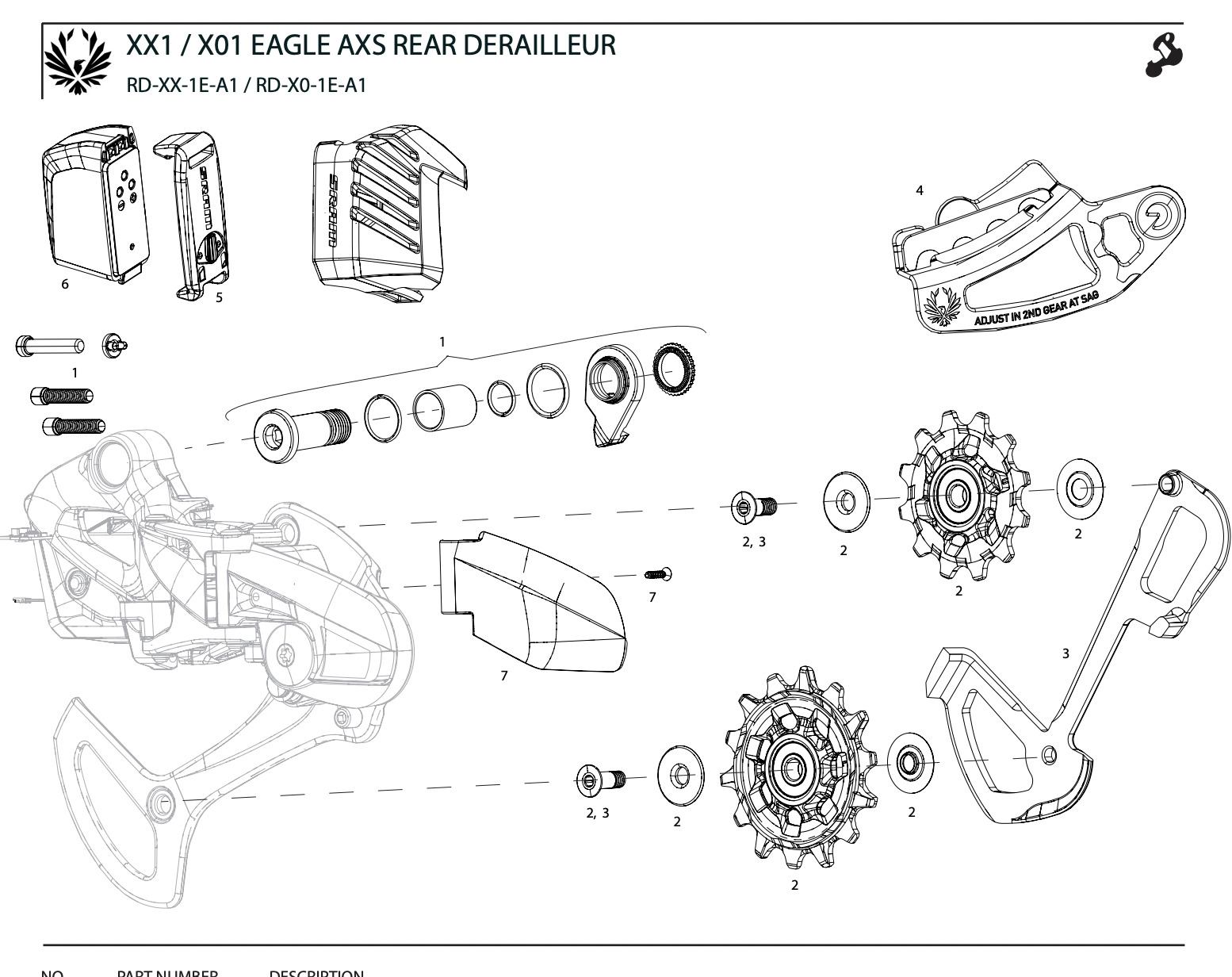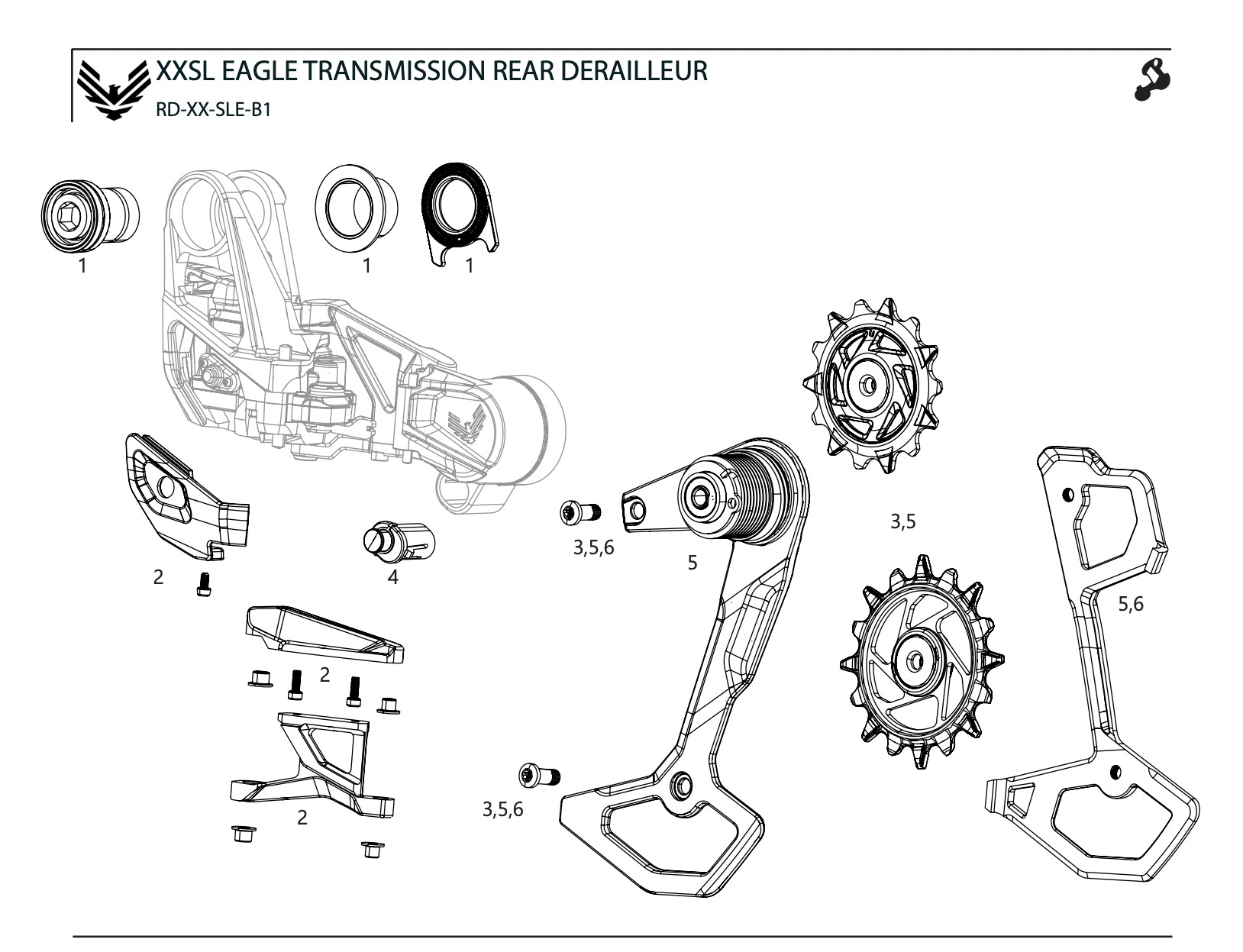
With the release of SRAM’s new Eagle Transmission, one of their biggest points of emphasis was the durability of the new T-Type direct mount derailleur. And while we don’t yet have enough time on the T-Type system to speak to how it holds up long-term (we’re working hard on it, though), we thought we’d take an in-depth look at how the existing AXS MTB drivetrain has done in a long-term durability study, and also how their new Transmission aims to improve on it.
Let’s face it, derailleurs take a beating. And their job is harder than ever now, with more cogs to manage and a massive range between the smallest and largest, which requires more accuracy and stability. I think it goes without saying that most mountain bikers have had to replace a damaged derailleur. That has never been an inexpensive repair, but now with the advent of electromechanical derailleurs, replacement costs are much higher. The least expensive SRAM AXS MTB derailleur is just under $400, and the higher-end offerings top out at over $700 (and the new Eagle T-Type derailleurs range from $550 to $650). So when the time comes to consider drivetrain spec on a new bike, or as an upgrade, replacement cost and durability absolutely are a consideration.
In a traditional mechanical system, pushing the shifter with your thumb mechanically moves the derailleur up the cassette. Your thumb does all the work. If the derailleur and hanger are both undamaged and in alignment, shifting performance going up the cassette (to an easier gear) is usually good. And yes, chain and cassette wear can impact the quality (speed) of the shift, but typically the job gets done. Clicking to downshift (to a harder gear), however, is usually where problems become apparent. The derailleur relies on a spring here, and that spring not only has to move the derailleur down the cassette but also has to drag the cable through the housing from the shifter. Any extra resistance in the system will result in an inaccurate shift. This resistance could come from something as simple as the cable and housing being worn, corroded, or damaged, and more often than not, that is the problem. But when new cable and housing with a hanger alignment doesn’t remedy the poor shifting, we have to look a bit deeper. And at this point, it’s usually related to the derailleur itself, whether it be a worn return spring, or more commonly, physical damage to the derailleur — particularly in the pivot area.

Let’s take a quick sidebar and talk about the derailleur hanger. I’m sure SRAM will agree with this given their new T-Type Full Mount design, but derailleur hangers have been a bit of a necessary evil — something has to connect the derailleur to the frame, locate it accurately, and be replaceable. The evil part comes into play from the sheer number of different hangers, the manufacturing tolerances between them, and the fact that they can and do break, rendering your drivetrain inoperable. Older derailleur hangers used to be really soft, with the idea that they would prevent frame damage, but they also broke a lot more often. But because they absorbed most of the impact from obstacle strikes, catastrophic derailleur damage was less common. Fast forward to today, and hangers are way more robust. Some of this can be attributed to frame and through-axle design, but they also do need to be stiffer to manage the additional forces applied from modern clutched derailleurs, as well as the need for greater accuracy on tighter-spaced cassettes. Unfortunately, this means that when faced with a direct impact, the derailleur itself is left absorbing the lion’s share of it.
Before we delve into the durability question, let’s talk about why you should even consider an electric shifting system in the first place. As we talked about above, cables are the most frequent cause of poor shifting, and with the cables out of the picture, an AXS derailleur already has an advantage over a mechanical one. Sure, you need to charge a battery instead, but it’s a less-finicky, more straightforward process than fine-tuning a regular derailleur and keeping the cable running smoothly.
Next up we have the return spring — an AXS derailleur doesn’t have one of these either. Instead, its electric motor not only moves the derailleur up the cassette but also back down. It’s on the way back down, however, where the accuracy of an AXS derailleur shines — the shift down is just as precise as the shift up, which never could be said about any mechanical derailleur. Finally, there’s the damage to the pivots question. An AXS derailleur has an override clutch that senses an impact, which in turn causes the derailleur to go limp and essentially get out of the way of whatever caused the impact – hopefully preventing physical damage. All these attributes should in theory contribute to a more reliable derailleur, but has that actually been the case?
Well, the short answer is yes. My household has had four different AXS-equipped personal bikes now, some of which we’ve had for as long as four years. Our local riding in the Colorado towns of Buena Vista, Salida, and Crested Butte is very hostile to derailleurs — Salida and Buena Vista especially. You can see from the photos that the derailleurs look punished, and believe me, they have been. Out of the four derailleurs, only one has needed replacement parts, and only for a broken lower pulley. The other three have required nothing. Two of them have been 100% set and forget, not even requiring any hanger alignments — which in the area in which they’ve been ridden is unheard of for mechanical derailleurs. The other two had some fairly significant crashes that did result in the hangers needing alignments. Still, in both cases, other than cosmetic damage, both derailleurs returned to perfect working order.

My theory is that the override clutch is quite effective in protecting those vulnerable pivots. Specifically, the pivots on the outside of the parallelogram — the area that looks especially haggard in the photos. In a direct comparison between two SRAM GX Eagle derailleurs, one mechanical and one AXS, both having been in service for roughly the same period of time, and both with the same rider onboard, the mechanical GX has needed multiple hanger alignments to the AXS one not needing any. Additionally, the mechanical GX started showing symptoms of pivot damage with inconsistent downshifts, ultimately requiring replacement. All the clutches have behaved with no issues to report. In the battery department, the two with the most miles have required a shifter battery replacement (CR2032), but this even took over two years to occur. All of the actual derailleur batteries are still in service, have shown no signs of needing replacement, and routinely go weeks of riding between charges. On that note, I do still recommend having a spare on you when you ride — it’s cheap insurance should you forget to charge the primary one.
In summary, SRAM’s AXS rear derailleurs have surpassed my expectations for durability. Yes, they cost more, but they also perform better than their mechanical counterparts and have a proven long-term track record. In my opinion, the only area in which a SRAM mechanical derailleur bests its AXS counterpart is in the initial cost. But once you consider that, in my experience, you’re more likely to need a mechanical derailleur replacement, the higher initial cost of an AXS derailleur is easier to justify — and this is without taking into account that shifting performance is significantly better on the AXS.
The dust is still settling on SRAM’s new Eagle Transmission release, but they’ve obviously learned quite a bit from existing AXS drivetrains. We have a long-term review in the works and will be keeping a keen eye on the durability question. The added strength gained from the Full Mount system should improve shift performance, and probably the durability of the upper part of the derailleur around the B-knuckle, but will that just lead to more abuse of the parallelogram and parts downstream? It seems possible that the latter may be true, especially given that SRAM is making replacement parts available. To be clear, we’re extremely excited to see these previously unavailable parts become available, specifically those vulnerable pivots we’ve mentioned quite a bit already — honestly, the spare parts component may be one of our favorite features of the new T-Type derailleur.
Putting it all together, the original Eagle AXS drivetrain is still a great option. It has proven reliability and excellent performance, and it is easy to upgrade to it from an Eagle mechanical system. Yes, the new Eagle Transmission looks to improve on the original in a number of important areas, but don’t forget you’ll still need a frame with a UDH to even consider it. And if you’re thinking about an upgrade path from SRAM Eagle mechanical, it will require the entire “Transmission” which will add significant cost. I’m going to go on record here, and say that I firmly believe wireless electromechanical rear derailleurs with their corresponding shifters are a better mousetrap — but we’ll need more time and more abuse to know if or how far the new T-Type groupset pushes the AXS system forward.
We’re logging a ton of time on the new Eagle Transmission and will have more answers soon.




Anybody know if the Transmission shifters work with the old AXS derr.?
They do. It’s covered in our writeup on the Transmission: https://blisterreview.com/gear-reviews/sram-eagle-transmission
I have axs and love how easy it is to shift just clicking with no cable resistance. I ended up going for axs dropper to clean up my handlebars even more plus I have a spare battery with me should I forget to charge and forget my actual spare.
Was chainslap an issue with the GX AXS?
Sadly, I have some experience here. I have two bikes, both with SRAM Eagle AXS X01 RD. After about 3 years, the mtn bike with this system had a failed derailleur. It would fail intermittently, more and more frequently This was NOT a battery problem. It would just stop working. Ultimately, I noticed one of the pins was not making contact. I pulled the derailleur apart and noticed a tiny spring that no longer worked. Note that this voided the warranty but I put it back together. SRAM was completely unresponsive to me personally, so I had to go through the original dealer. They had ZERO luck (3 years old component). SRAM left me having to buy another derailleur. HATE SRAM customer service, as if it exists.
Sadly, I have the next installment. That mtn bike works fine, but here I am on a gravel trip in Europe with an Open Wide, also with the same AXS derailleur. Same irregular failure. Once it said it was the battery. I changed battery several times, and at several points was able to get the SRAM app on my phone to interact with device, telling me battery was charged (both batteries). Again, this is intermittent, unreliable, NOT a battery problem. This time the pins appear to still have function, but it’s as if the device doesn’t recognize having power. I think I’m headed for a 4 hour drive to a bike shop to buy a new derailleur. So if you are reading this and contemplating buying SRAM AXS, have caution. When the system is working, it’s really reliable and great! But I can’t believe I have another failure. And rare too, as I don’t know anyone else with this problem. Good luck.
“downshifting” actually means shifting to an easier gear (as in “downshifting to first gear” — in car terminology)
A better nomenclature convention when discussing rear cassettes is “outboard” direction for harder gears versus “inboard” direction for easier gears
similar to jrlieber, my the pogo pin in my GX transmiision derailleur went bad after 3 months of weekend cross-country riding, approximately 350 miles, in almost entirely dry perfect weather conditions. SRAM customer service was absolutely no help, and the warranty department was even less help. This was my first time switching over to SRAM components, and it will definitely be my last time. Gilded garbage….